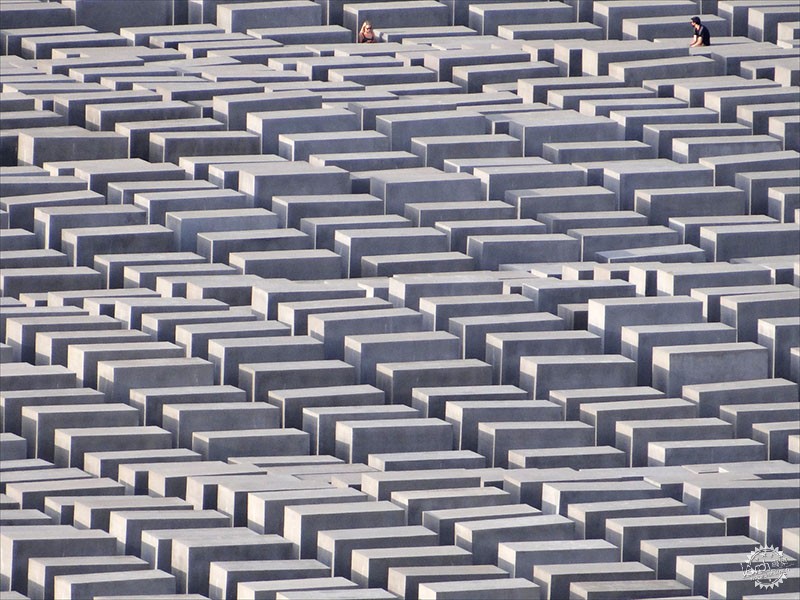
欧洲被害犹太人纪念碑/彼得·艾森曼|The Memorial to the Murdered Jews of Europe / Peter Eisenman. Image © Flickr user Jean-Pierre Dalbéra licensed under CC BY 2.0
未来的几代人将如何回应现代纪念建筑?
How Will Future Generations Respond to Modern-Day Memorial Architecture?
由专筑网缕夕,王帅编译
提起纪念性建筑,我们不禁会想起那些墓地里那些长期被遗忘的名字,那些在早跑时忽略的画像刻蚀的斑块,还有那些纪念战争胜利的纪念碑,曾经这些建筑是某个人或一群人的情感寄宿,但现在逐渐变化成旅游景点或景区内的建筑。
自二战以来,纪念性建筑发生了巨大的变化,从纪念姓名、英雄和爱国主义纪念碑,到表达哀悼和损失的抽象符号。纪念建筑的这种转变将怎样改变我们体验它们的方式?当时间逝去,记忆的事件几乎被遗忘,我们将如何体验和记忆?
纪念建筑是为数不多的建筑类型之一,其基本功能不是居住,而是感受和记忆。人类总是需要一些永久和有形的东西来理解失落,在记忆和现在之间用石头和水泥砂浆来建立联系。纪念建筑提供了一个人们可以缅怀、哀悼和理解无形情感的空间。在许多方面,纪念建筑的功能是既要缓和现在的痛苦,又要说服世界,它将以某种方式生活在集体记忆中,并世世代代传承下来。
Graveyards full of names that have long been forgotten, plaques etched with portraits that you ignore on your morning jog, monuments with friezes that depict the triumphs of war—all these are examples of memorial architecture, which once held intense emotional meaning for certain individuals or groups of people, but have now gradually become tourist attractions or anachronistic sites within a changed landscape.
Since the horrors of World War II memorial architecture has changed drastically, from monuments focusing on names, heroes, and patriotism to abstract symbols of mourning and loss. How will this shift in the design of memorials change the way we experience them in the present and, more importantly, in the future? When generations pass away and the memorialized event becomes almost forgotten, how will we experience and remember?
The memorial is unique in that it is one of the few types of architecture whose fundamental function is not shelter but rather to feel and to remember. Humans have always needed something permanent and tangible to make sense of loss, to create a physical connection of stone and mortar between memory and the present. Memorial architecture offers a space where one can remember, mourn and try to make sense of intangible emotion. In many ways, the function of the memorial is to both soothe the pain of the present and to convince the world that the pain was not in vain, that it will live on somehow in collective memory and be passed on through generations and time.
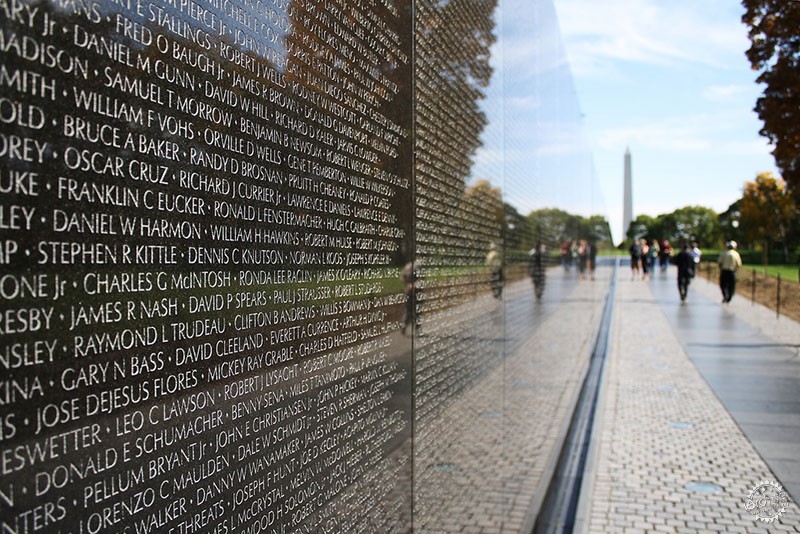
越战纪念碑/林璎|Vietnam Veterans Memorial / Maya Lin. Image © Flickr user Derek Key licensed under CC BY 2.0
然而,不同纪念建筑的方式会因微纪念事件发生后的时间而存在很大不同。当其首次建成或发布设计时,由于与纪念事件相关的人们情绪高涨,因此经常存在争议。林樱( Maya Lin)设计的越战纪念碑(Vietnam Veterans Memorial)上刻有牺牲士兵名字,这是一个鲜明的历史伤口痕迹,因其缺乏爱国符号、政治信息的干扰,以及设计者是美籍华人,这都让作品充满着争议。同样,围绕纪念安德斯·布雷维克(Anders Breivik)2011年大屠杀遇难者的争议导致该项目被挪威政府取消。项目作品名为“记忆伤口(Memory Wound)”,它包括Utøya岛附近发生的大屠杀。纪念碑在地理和情感上的空间距离都太靠近历史事件,当地人拒绝这种痛苦的纪念被迫进入他们的日常生活。纪念建筑是受害者和幸存者的一种关系纽带,设计师更需要确认他们对事件的情绪。如果纪念建筑不符合受害者的观点,或者因为它不断的唤起受害者的痛苦,那么它通常会遭到愤怒和抵抗。
However, the way in which memorials are experienced differs vastly depending on the time that has passed since the memorialized event. When memorials are first built, or the designs first released, there is often controversy as emotions associated with the event run high. Maya Lin’s Vietnam Veterans Memorial, a striking gash in the landscape that displays the names of fallen soldiers, was decried for its lack of patriotic symbols, what people saw as its political message, and the fact that Lin was Chinese-American designing a memorial for a war fought in Asia. Similarly, the controversy surrounding the memorial to the victims of Anders Breivik’s 2011 massacre led to the project being canceled by the Norwegian government. Entitled “Memory Wound,” it would have consisted of a split in the landscape near the island of Utøya, where the massacre occurred. The memorial was too close, both geographically and emotionally, and the locals rejected such a painful reminder forced into their daily lives. When a memorial is first constructed, it is for the victims and the survivors, a way to confirm their emotions regarding the event. Memorial architecture is often met with anger and resistance if it does not conform to the victims’ views, or because it can re-evoke the pain in a constant reminder.
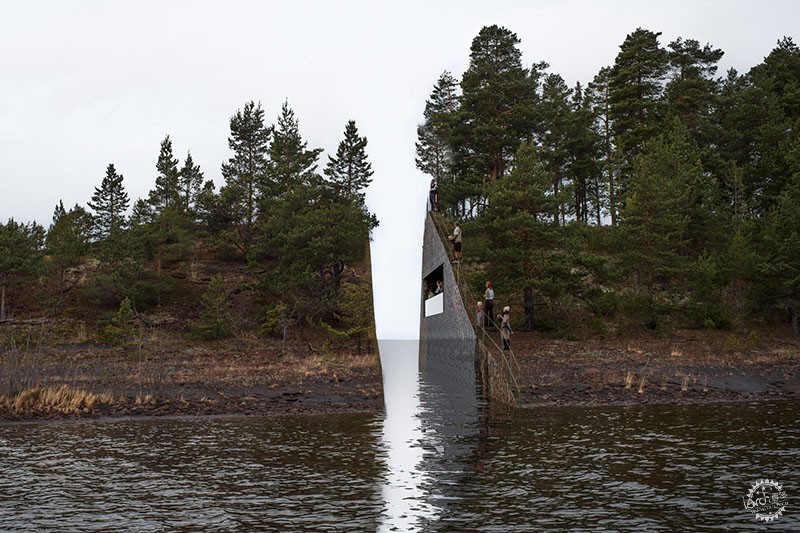
记忆伤口|Memory Wound / Jonas Dahlberg. Image © Jonas Dahlberg
然而,随着社会发展进步,纪念建筑开始发展并承担新的社会功能。它开始作为填补社会重建空白的物质对象,成为一种将历史与现在相协调的方式。随着历史事件的热度逐渐下降,纪念建筑开始被赋予了新的意义,建筑变得更加开放。二战前的纪念碑往往是独立的纪念碑,这些建筑上精心雕刻着战争英雄的名字。它们仍然主要是受害者和幸存者经常前往的地方,其他常客是那些过去的家庭成员,因为他们想要寻求一个地方了解自己的相关历史。
As time passes, however, memorials begin to evolve and take on new social functions. What began as a physical object to fill the void in social reconstruction becomes a way to reconcile history with the present. Memorials begin to take on new meanings as the events fade from individual memory and the architecture becomes much more open to interpretation. Pre-WWII memorials are often freestanding monuments, with war scenes of elaborately sculpted heroism and names etched into stone. They are still places primarily for the victims and survivors, with other regular visitors being those whose past family members were involved as they seek a place to understand their own relevant history.
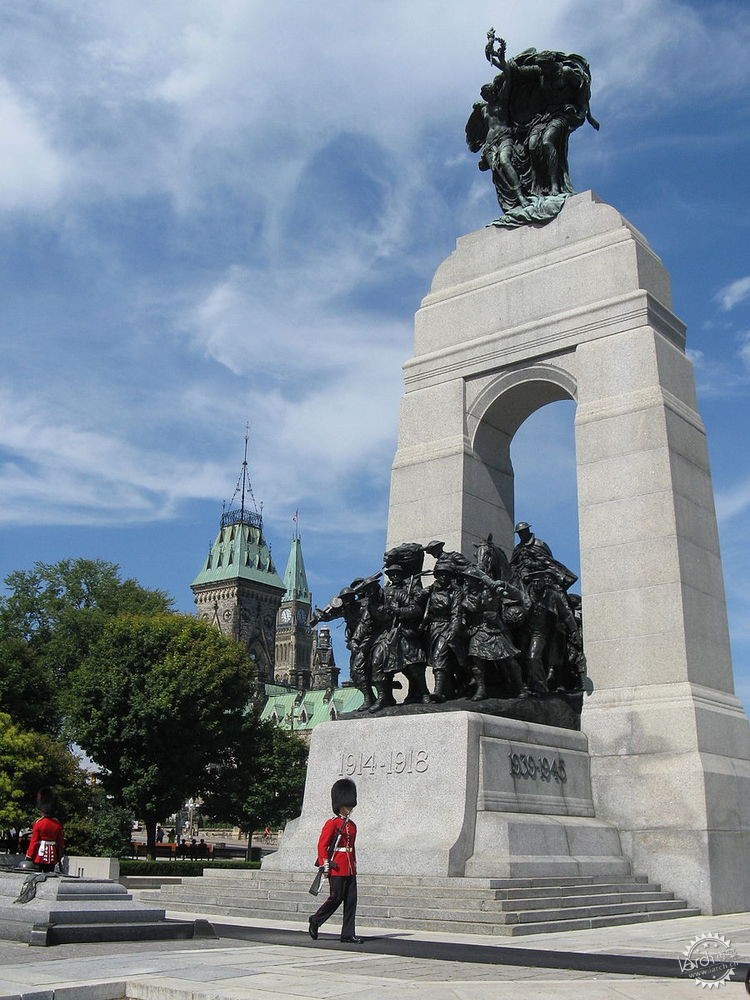
加拿大国家战争纪念碑|Tomb of the Unknown Soldier at the National War Memorial in Ottawa, Canada. Image via Wikimedia Commons
二战后的纪念建筑变得越来越具有反纪念性和普遍性,相比于歌颂胜利,纪念建筑更偏向于缅怀牺牲者、纪念受害者。纪念馆使用更抽象的象征主义和自然元素来唤起精神反思,更多地是关于景观而不是单个物体。 由Kenzo Tange设计的广岛和平纪念公园(Hiroshima Peace Memorial Park )使用了传统形式的雕塑,并在在景观周围点缀着纪念碑。虽然作品让游客了解到那里发生的恐怖事件,从A-Bomb Dome到博物馆,公园洋溢的气氛是平和,也是一个新的开始。水、自然和开放空间对所有人都有吸引力,设计师鼓励人们将它作为一个普通的公园,而不仅仅是一个阴沉的空间。
Post-WWII memorial architecture became increasingly anti-monumental and universal, prioritizing spaces that spoke of loss rather than celebrating victories. Using more abstract symbolism and elements of nature to evoke spiritual reflection, memorials became more about a landscape than a single object. The Hiroshima Peace Memorial Park, designed by Kenzo Tange, uses traditional forms of sculpture and monument dotted around a landscape. Although the design educates visitors about the horrors that have occurred there, from the view of the A-Bomb Dome to the contents of the museum, the overlying atmosphere of the park itself is one of peace and a new beginning. The universal symbols of water, nature, and open space appeal to all, the design encouraging its enjoyment as a normal park, not only as a space for somber reflection.
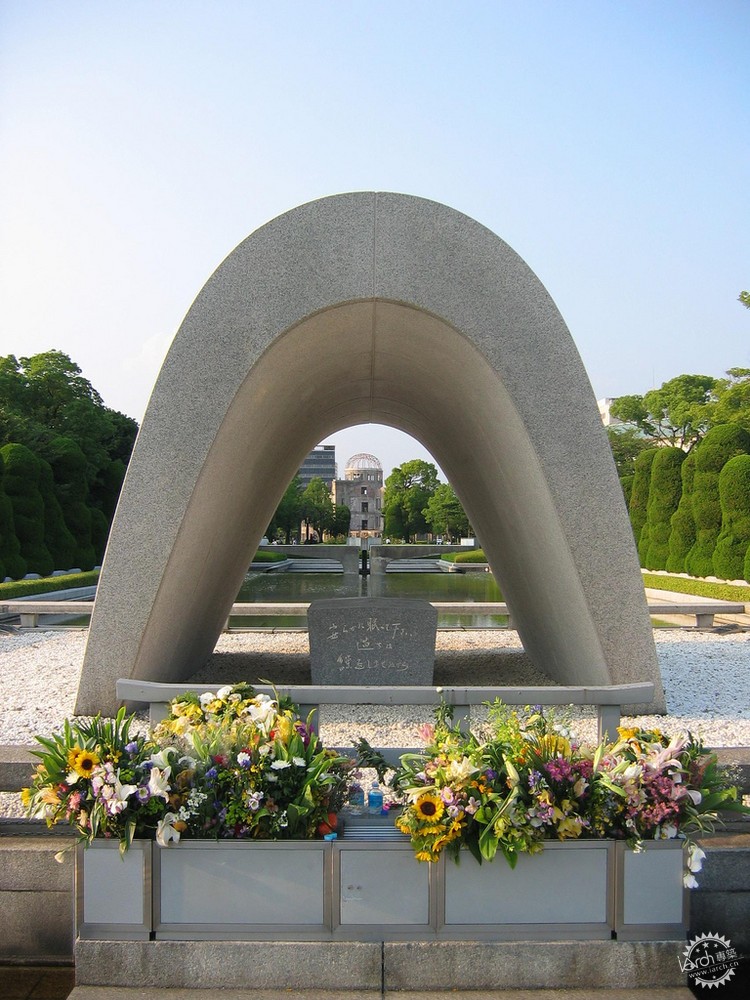
广岛和平纪念公园/丹下健三|Hiroshima Peace Center and Memorial Park / Kenzo Tange
彼得·艾森曼(Peter Eisenman)的欧洲被害犹太人纪念碑(Memorial to the Murdered Jews of Europe)同样设计了一个景观,但它令人感到不安。里面有2711个不同高度的混凝土板,让人联想起大型且无标记的墓碑——死亡中无名的海洋。 Eisenman本人将该项目描述为“当一个假定的理性和有序系统变得太大而且与其预期目的不成比例时,它实际上与人类理性失去联系。”该纪念建筑设计定义作为空间的想法,记载了特定事件,而不是创建一个具有个人意念的景观。“在这种背景下,没有怀旧,没有过去的记忆,只有个人经历的生活记忆。我们只能通过它在现在的表现来了解过去。”
Peter Eisenman’s Memorial to the Murdered Jews of Europe similarly creates a landscape, but one of discomfort and unease. With 2,711 concrete slabs of differing heights, the landscape is reminiscent of large, unmarked gravestones—a sea of anonymity in death. Eisenman himself describes the project as a suggestion that “when a supposedly rational and ordered system grows too large and out of proportion to its intended purpose, it in fact loses touch with human reason.” The project confronts the idea of the memorial as a space for remembering a specific event, instead creating a landscape that begins to take on its own meaning and individual interpretations. “In this context,” Eisenman explains, “there is no nostalgia, no memory of the past, only the living memory of the individual experience. Here, we can only know the past through its manifestation in the present.”

欧洲被害犹太人纪念碑/彼得·艾森曼|The Memorial to the Murdered Jews of Europe / Peter Eisenman. Image © Flickr user Peter Toporowski licensed under CC BY 2.0
纪念建筑中向抽象转变,将其从纪念单个事件的空间改变为整个想法或情感的空间。它展示了人们将来体验这些纪念碑的方式将发生转变,因为这些事件的直接恐怖感受和情感联系不可避免地从视野中消失。虽然我们可能希望这些事件仅作为对未来的提醒,但Shahak Shapira记录游客在艾森曼的大屠杀纪念馆中不尊重行为提醒我们,建筑不能强迫人们反思或感受到某种情绪。也许,有一天,人们在不联想到那里发生历史的事件的情况下,享受这些纪念场所,不让恐怖或和平的情绪继续影响游客。正如彼得·卒姆托(Peter Zumthor)在他的《思维建筑》一书中所写,“建筑是暴露在生命中的。如果它的身体足够敏感,它可以呈现出一种见证过去生活现实的品质。而时间会证明一切。”
The shift towards the abstract in memorial architecture changes these projects from spaces that memorialize a single event to spaces that begin to encapsulate an entire idea or emotion. It suggests a transformation in the way people will experience these memorials in the future when the immediate horror and emotional connection to these events inevitably fade from view. Although as a society we may wish for these events to be kept forever as a reminder to the future, things like the Yolocaustproject, in which Shahak Shapira documented tourists being disrespectful at Eisenman’s Holocaustmemorial, remind us that architecture cannot force people to reflect, or feel a certain emotion. Perhaps, one day, people will enjoy these memorial sites without a single thought of what occurred there, or perhaps the emotions of horror or peace will continue to affect visitors. As Peter Zumthor wrote in his book Thinking Architecture, “Architecture is exposed to life. If its body is sensitive enough, it can assume a quality that bears witness to the reality of past life.” Only time will tell.
|
|
